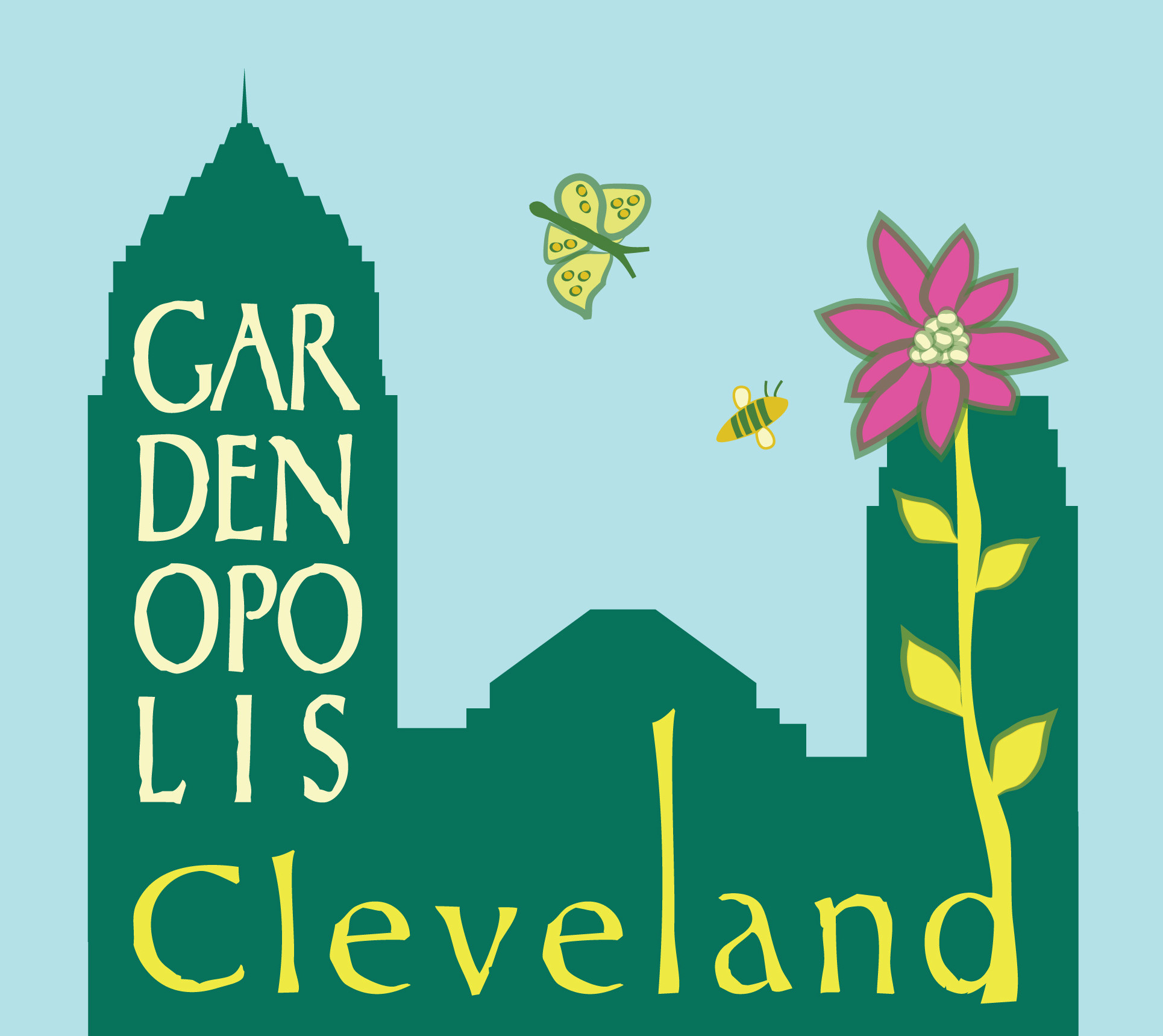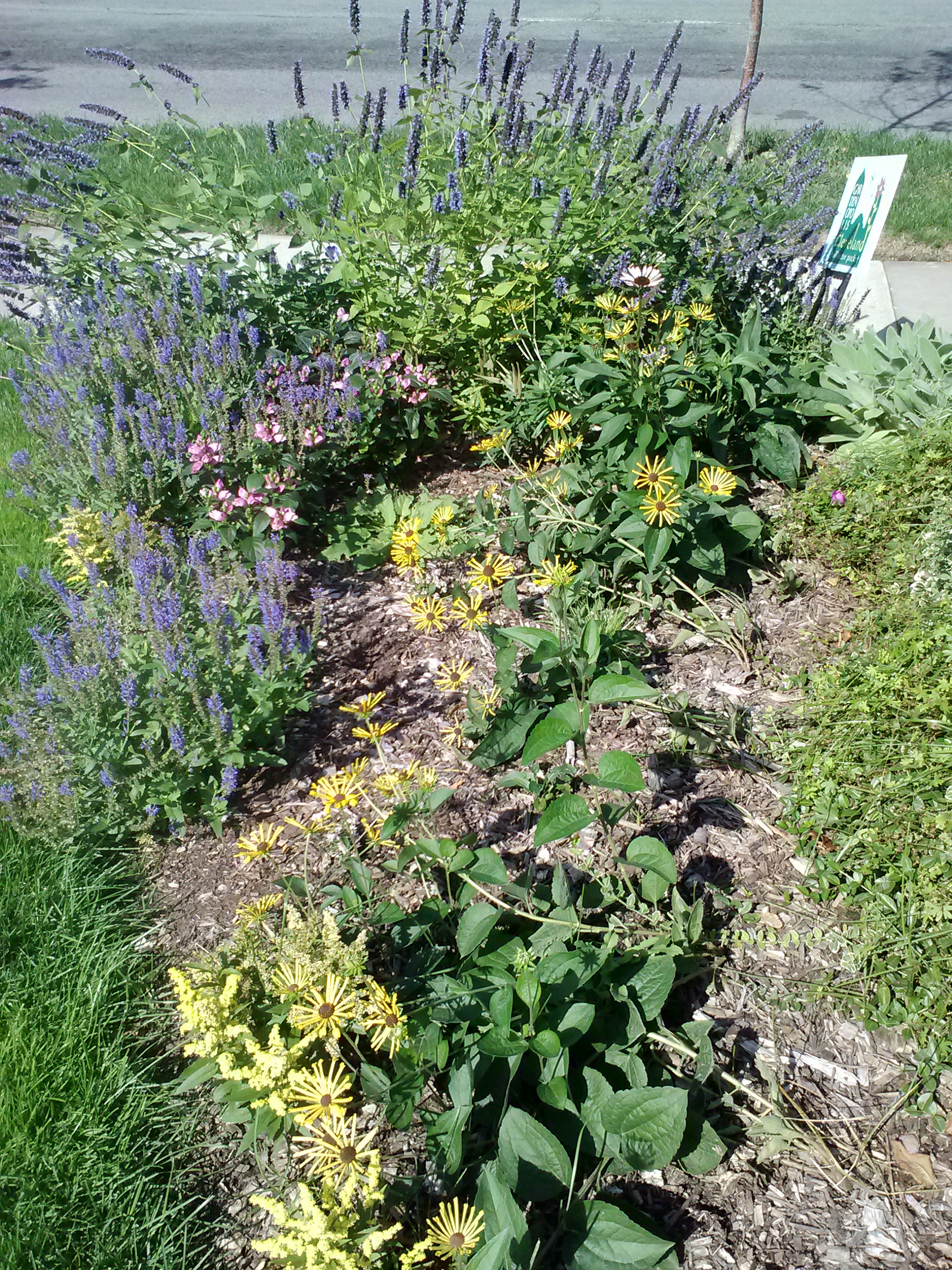by Elsa Johnson and Catherine Feldman
Last fall Gardenopolis Cleveland decided to offer to help people develop pollinator pockets, starting with soil building via lasagna mulching in the fall, then returning the following spring to plant pollinator attracting flowers. But, of course, before we began, we had to have a sign…so we designed one.
When you see this sign around town, look for a nascent pollinator pocket.
Next, we sent our idea out into the ether and in a short time-voila!-we had a handful of takers.
The original idea had been to place our pollinator pockets on tree lawns or front yards for visibility (else why need a sign?) and make them all the same–a formula–but we quickly ran into a hitch–nature doesn’t do formulas. Each site we looked at was different than the one before.
Since our sites were all different–one long, skinny and very shady, several sunny, one on the edge of the woods–we realized that we needed a variety of plants to meet a variety of conditions. Our goal was that each pocket had plants attractive to pollinators across one complete growing season, i.e., spring to fall. Now we needed to consider plants that could handle a broad spectrum of environmental conditions. Surely a job for (drum roll) native plants!
Our selection included milkweed, aster, coneflower, pink turtlehead, agastache, lobelia, geranium, eupatorium, native solomon’s seal, golden road and salvia. This mix tended toward mid-summer to fall bloomers–we found it interesting how so many of our native wildflowers are late season. We used only plants that were designated as unappetizing to deer.
We usually buy plants in one or two gallon containers but because we needed a variety of plants and needed to keep our costs down we purchased very small plugs from a native plant mail-order nursery.
Checking on our pollinator pockets this fall we found varying results. One that had not been watered was basically gone. But, the rest were growing and doing well–though it will be next year before they mature and fill their purpose.
If the idea of a pollinator pocket in your garden seems appealing, just let us know. Our goal is a pocket in every garden!
FYI
*A lasagna mulch consists of layers of soil building materials-newspaper, manure, compost, green and dried leaves, straw and wood chips or cover crop-that break down over time to increase the organic composition of the soil.
*A pollinator pocket is an area of at least 5’x5′ planted with a range of plants that help sustain bees, bugs, butterflies and birds throughout the year. Ideally, such pockets would exist in every yard so that the pollinators could travel from one to the next fulfilling their needs.

